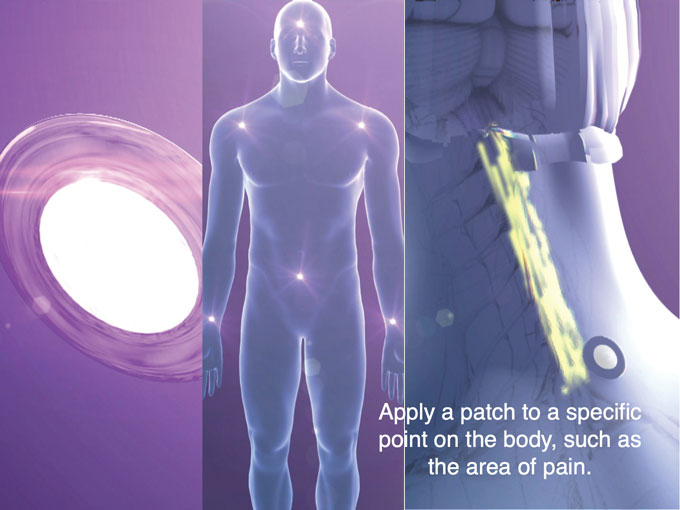Are you tired of dealing with the constant pain and discomfort of arthritis? Look no further than infrared light therapy. This innovative treatment uses low-level infrared lights to penetrate deep into your joints, providing soothing relief and reducing inflammation. Whether you’re suffering from osteoarthritis, rheumatoid arthritis, or any other form of joint discomfort, infrared light therapy has shown promising results. Say goodbye to your daily struggles and hello to a life with less pain. Let’s explore how this therapy works and how it can benefit you.
Overview of Arthritis
Arthritis is a condition characterized by inflammation and stiffness in the joints, which can result in pain and reduced mobility. It is a common chronic illness that affects millions of people worldwide. There are various types of arthritis, each with its own unique symptoms and causes. Understanding the prevalence and symptoms of arthritis is crucial in effectively managing the condition and seeking appropriate treatment.
Definition of Arthritis
Arthritis is a broad term that encompasses a range of conditions involving joint inflammation. It can affect people of all ages, but it is more commonly seen in older adults. The symptoms of arthritis can vary from mild to severe and can significantly impact an individual’s quality of life.
Types of Arthritis
There are many different types of arthritis, including osteoarthritis, rheumatoid arthritis, psoriatic arthritis, gout, and juvenile arthritis, among others. Osteoarthritis is the most common form, affecting the cartilage in the joints and leading to pain and stiffness. Rheumatoid arthritis, on the other hand, is an autoimmune disorder that causes inflammation in the joints. Each type of arthritis has its own set of symptoms and treatment approaches, making it important to consult with a healthcare professional for an accurate diagnosis.
Prevalence and Symptoms of Arthritis
Arthritis affects approximately 350 million people worldwide, making it one of the leading causes of disability. The prevalence of arthritis increases with age, and women are more likely to be affected than men. The symptoms can vary depending on the type of arthritis but often include joint pain, stiffness, swelling, and reduced range of motion. These symptoms can significantly impact daily activities and overall well-being.
Understanding Infrared Light Therapy
In recent years, infrared light therapy has gained attention as a potential treatment option for arthritis. This non-invasive and drug-free therapy involves the use of specific wavelengths of light to penetrate the skin and provide various therapeutic benefits. Understanding how infrared light therapy works and its potential benefits is essential for individuals seeking alternative ways to manage their arthritis symptoms.
Definition of Infrared Light Therapy
Infrared light therapy, also known as low-level light therapy or photobiomodulation, utilizes red and near-infrared light to stimulate cellular regeneration and reduce inflammation. The therapy involves exposing the affected area or the whole body to this specific wavelength of light, which is believed to penetrate deeper into the tissues compared to other types of light.
Mechanism of Action
Infrared light therapy works by stimulating the mitochondria in the cells, which enhances the production of adenosine triphosphate (ATP), the energy source of cells. This increased energy production helps to improve cellular function and promote tissue repair. Additionally, infrared light therapy has been shown to stimulate the release of nitric oxide, which can improve blood flow and reduce inflammation in the joints.
Benefits of Infrared Light Therapy
There is evidence to suggest that infrared light therapy can provide several benefits for individuals with arthritis. Some of these potential benefits include reduced pain and inflammation, improved blood flow and circulation, enhanced tissue repair and regeneration, and increased joint mobility. These benefits make infrared light therapy an attractive option for individuals seeking relief from their arthritis symptoms.
Research on Infrared Light Therapy for Arthritis
Many studies have been conducted to explore the effects of infrared light therapy on arthritis. These clinical studies help to provide scientific evidence and support the use of this alternative therapy as a potential treatment option for individuals suffering from arthritis.
Clinical Studies on the Effects of Infrared Light Therapy on Arthritis
Several clinical studies have investigated the effectiveness of infrared light therapy in managing arthritis symptoms. These studies often involve participants with various types of arthritis and assess the effects of infrared light therapy on pain, inflammation, joint mobility, and overall quality of life.
Findings from Research Studies
The findings from these research studies have been promising. Many studies have reported a significant reduction in pain and inflammation for participants who underwent infrared light therapy. Additionally, improvements in joint mobility and function have been observed, allowing individuals to regain their ability to perform daily tasks with greater ease.
Effectiveness of Infrared Light Therapy for Arthritis
While further research is still needed to fully understand the effectiveness of infrared light therapy for arthritis, the existing evidence suggests that it can be a valuable complementary treatment option. By reducing pain and inflammation and improving joint function, infrared light therapy can contribute to the overall management of arthritis symptoms and enhance the quality of life for individuals living with this condition.
How Does Infrared Light Therapy Help Soothe Joint Discomfort?
The mechanism of action of infrared light therapy offers several ways in which it can help soothe joint discomfort and provide relief for individuals with arthritis.
Reduction of Inflammation and Pain
Infrared light therapy has been shown to reduce inflammation in the joints, which is a common symptom of arthritis. By targeting the affected areas with infrared light, the therapy helps to decrease the production of inflammatory mediators and promote the release of anti-inflammatory substances. This can lead to a reduction in pain and discomfort associated with arthritis.
Stimulation of Blood Flow and Circulation
Infrared light therapy has the ability to improve blood flow and circulation, which is beneficial for individuals with arthritis. By increasing blood flow to the affected joints, the therapy helps to deliver oxygen and nutrients to the tissues, promoting their healing and regeneration. Improved circulation can also aid in the removal of waste products, further reducing inflammation and enhancing joint function.
Promotion of Tissue Repair and Regeneration
The enhanced cellular function and increased production of ATP stimulated by infrared light therapy can promote tissue repair and regeneration in the affected joints. This can help to repair damaged cartilage, reduce joint degeneration, and improve overall joint health. By supporting the body’s natural healing processes, infrared light therapy can contribute to long-term joint health and management of arthritis symptoms.
Safety and Precautions
While infrared light therapy is generally considered safe, it is important to be aware of potential side effects and contraindications. Following safety guidelines and consulting with a healthcare professional is crucial to ensure the proper and safe use of infrared light therapy for arthritis.
Potential Side Effects of Infrared Light Therapy
Infrared light therapy is generally well-tolerated, but some individuals may experience temporary side effects such as mild redness, warmth, or tingling in the treated area. These side effects are usually mild and subside shortly after the therapy session.
Contraindications for Infrared Light Therapy
There are several contraindications for the use of infrared light therapy, and it is important to be aware of these before starting treatment. Individuals with active malignancies, open wounds, infections, or photosensitivity disorders should avoid infrared light therapy. It is also not recommended for individuals who are pregnant or have a history of seizures.
Safety Guidelines for Using Infrared Light Therapy for Arthritis
To ensure the safe and effective use of infrared light therapy for arthritis, it is important to follow certain guidelines. This includes using devices or saunas that are FDA-approved or certified by reputable organizations, wearing appropriate eye protection, and discussing the therapy with a healthcare professional before starting treatment. Additionally, it is essential to adhere to the recommended duration and frequency of sessions to avoid overexposure.
Methods of Infrared Light Therapy for Arthritis
There are different methods through which individuals can undergo infrared light therapy for arthritis. Each method has its own unique advantages and considerations, allowing individuals to choose the most suitable approach based on their preferences and needs.
Infrared Light Saunas
Infrared light saunas, also known as infrared saunas or far-infrared saunas, are enclosed spaces that emit infrared light to heat the body directly. These saunas raise the body temperature and promote sweating, which can help eliminate toxins and provide therapeutic benefits for arthritis. Infrared light saunas are available in various sizes and formats, ranging from individual portable saunas to large sauna rooms for multiple users.
Infrared Light Panels
Infrared light panels are devices that emit infrared light in a controlled manner, allowing individuals to target specific areas affected by arthritis. These panels can be placed on or near the affected joints, delivering the therapeutic benefits of infrared light directly to the target area. Infrared light panels are typically portable and easy to use, making them a convenient option for individuals seeking targeted relief.
Infrared Light Devices
Infrared light devices are handheld devices that emit infrared light, providing a focused and concentrated therapy. These devices are compact and portable, allowing individuals to use them on specific joints or areas of concern. Infrared light devices often come with different settings and intensities, allowing users to customize their treatment based on their needs and preferences.
Infrared Light Therapy as a Complementary Treatment for Arthritis
While infrared light therapy can provide significant relief for arthritis symptoms, it is important to consider it as a complementary treatment rather than a standalone solution. Integrating infrared light therapy with conventional arthritis treatments can enhance the overall management of the condition and lead to better outcomes.
Combining Infrared Light Therapy with Conventional Arthritis Treatments
Infrared light therapy can be used alongside conventional treatments for arthritis, such as medication, physical therapy, and lifestyle modifications. By incorporating infrared light therapy into a comprehensive treatment plan, individuals can benefit from its unique therapeutic effects while still receiving the benefits of other established treatment approaches.
Role of Infrared Light Therapy in Pain Management
Infrared light therapy can play a crucial role in pain management for individuals with arthritis. By reducing inflammation, improving blood flow, and promoting tissue repair, the therapy can alleviate pain and discomfort associated with arthritis. This can reduce the reliance on pain medication and provide a more holistic approach to pain management.
Long-term Benefits of Integrating Infrared Light Therapy
Integrating infrared light therapy into the long-term management of arthritis can provide several benefits. The therapy’s ability to reduce inflammation and promote tissue repair can help slow down the progression of the disease and preserve joint function. Additionally, its non-invasive nature and lack of side effects make it a safe and attractive option for long-term use.
Tips for Using Infrared Light Therapy for Arthritis
To maximize the benefits of infrared light therapy for arthritis, it is important to follow certain tips and recommendations. These tips can help individuals make the most out of their therapy sessions and optimize their outcomes.
Choosing the Right Device or Sauna
When selecting an infrared light device or sauna, it is important to consider factors such as the treatment area, portability, and user-friendliness. Choosing a device or sauna that suits individual needs and preferences can enhance the overall experience and ensure effective treatment.
Recommended Duration and Frequency of Sessions
The recommended duration and frequency of infrared light therapy sessions may vary depending on the individual and the severity of their arthritis. It is advisable to start with shorter sessions, typically around 10 to 15 minutes, and gradually increase the duration as tolerated. The frequency of sessions can vary from daily to several times a week, depending on individual needs.
Supplementing Therapy with Stretching Exercises
In addition to undergoing infrared light therapy, incorporating regular stretching exercises into the daily routine can further improve joint mobility and flexibility. Stretching can help prevent stiffness and maintain joint health, complementing the effects of infrared light therapy.
User Experiences and Testimonials
Many individuals have shared their success stories and experiences with infrared light therapy for arthritis. These testimonials offer insights into the potential benefits of this therapy and can provide inspiration and hope for others seeking relief from their arthritis symptoms.
Success Stories of Individuals Using Infrared Light Therapy for Arthritis
Individuals have reported significant improvements in pain and joint function after incorporating infrared light therapy into their treatment regimen. These success stories highlight the transformative effects of this alternative therapy and serve as a testament to its potential benefits.
Patient Reviews and Feedback on Infrared Light Therapy
Online platforms and forums provide a platform for individuals to share their feedback and experiences with infrared light therapy. Reading patient reviews and testimonials can offer a comprehensive understanding of the therapy’s effectiveness and help individuals make informed decisions about their treatment options.
Conclusion
Infrared light therapy offers a promising option for individuals seeking relief from arthritis symptoms. Its ability to reduce pain and inflammation, improve blood flow and circulation, and promote tissue repair and regeneration makes it a valuable complementary treatment. However, it is important to consult with a healthcare professional before starting infrared light therapy to ensure its suitability for individual needs. By integrating infrared light therapy into a comprehensive treatment plan, individuals with arthritis can enhance their overall management of the condition and improve their quality of life.





